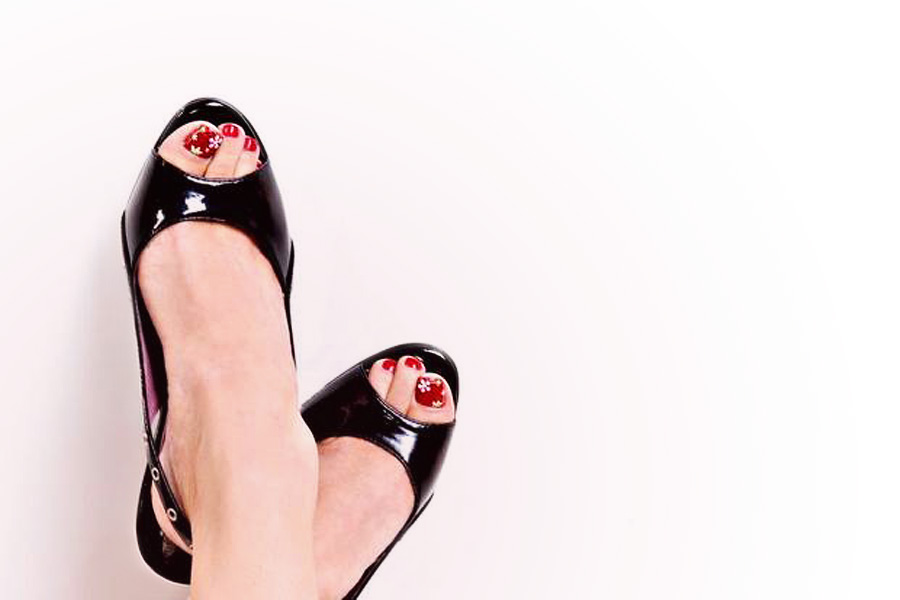“Ugly toenails”, “Embarrassment”, “Zombie toenails”, “Fungal nails”, “Hiding”, “Frustration” are some of the common words used to describe one’s fungal, damaged, warped, disfigured gryphotic toenails. The blackened, yellowish, brown colour is a reflection of the amount of fungus growing and feeding on your nail. Essentially, mould is growing on the nail, just like expired bread or a bathroom wall!
Mould/Fungus can be dangerous in many forms in air and food but when fungus attacks skin, hair and nail they are called dermatophytes. Fortunately, dermatophytes are harmless and are more likely fester on damaged, traumatised skin and nail. It is believed that fungus is viable for approximately 15 months, although it can last longer depending on how wonderful a hot and humid environment is.
There are many fungal nail treatment modalities ranging from antifungal lacquers, antifungal tablets to laser treatment! Because fungal nails are harmless, the great need to research a cure is low. Simply applying a lacquer or taking a tablet does not mean a cure. A management plan has to be implemented, one that is focused on modifying or improving the trigger not only treating the current symptoms.
Nowadays, it is safe to assume that we are creatures of comfort and convenience, possibly due to our busy lives. Therefore getting into a routine of a fungal nail treatment plan involving foot and shoe hygiene would be difficult to maintain. This will lead to continued embarrassment, impatience and frustration as the problem nail still appears with fungus. Introducing TOENAIL RECONSTRUCTION.
Wilde Pedique
To correct a damaged, thickened and/or fungal nail we utilise a unique light cured procedure called Wilde Pedique. It is a temporary measure lasting for four weeks to months offering partial or complete nail reconstruction but the last is dependent of the usage (running, sports).
The odourless, elastic UV-A gel acrylester resin has the ability to bond to a surface, strengthen and harden with a glossy finish whilst at the same time adapting to the many movements and pressures of the toe. Once applied, it will grow with the original nail and may need to be refilled every 6-8 weeks depending on the natural nail’s condition.
It is best for:
- Fungal Nails : can be used in conjuction with fungal nail treatment. Although It is not a cure but it will help limit and protect from the spread of the fungal infection due to its antifungal agent piroctone olamine
- Traumatised Nails : it can be used to correct and possibly reset a deformed nail thereby preventing future trauma and ingrown nails
- Cracked Nails : it can be used to fill up and seal splits to prevent snagging and fungal infiltration
- Surgically Removed Nails : some instances when ingrown nails are too painful, the ingrown nail shard or even the total nail is removed surgically by a Podiatrist. Please note: absence of any nail reduces the chances of toenail reconstruction success as the application has to adhere to an existing nail.
There are some clever people who have utilised a nail salon’s acrylic nails to hide their “ugly toenails”. Have a look at the comparison.
[table caption=”” width=”500″]
WILDE PEDIQUE NAILS, ACRYLIC NAILS
Non-acid based,Acid based
Non-latex,Latex
Sealed\, closed surface,Not sealed\, open surface
Antifungal properties,No fungal protection
Extremely light gel,Heavier
No odour,Odour from adhesives
No Primer/chemical activator,Uses acid primers
No damage to natural nail,Hinders growth and shape of natural nail
Non-porous/air sealed,Not air-sealed\, causing fungal environments
Contains antibiotic silver,Can cause paronychia (skin inflammation)
[/table]
Have any questions? Email us, facebook us or call us! Our Podiatrist, Grant will answer your queries.
Keen to start!? Call us or book online! PLEASE COME TO YOUR APPOINTMENT WITH OPEN-TOED FOOTWEAR, e.g. thongs, sandals, flip-flops

Grant Duong, Podiatry
At the Triumph Institute located in the heart of Bankstown, Sydney we also practice podiatry. It’s a medical field that specialises in the prevention, diagnosis, treatment and rehabilitation of problems and issues that affect the lower limbs, from the lower back right down to our feet.


